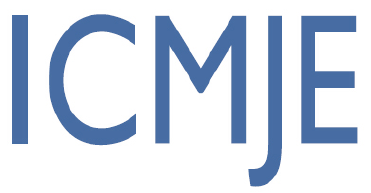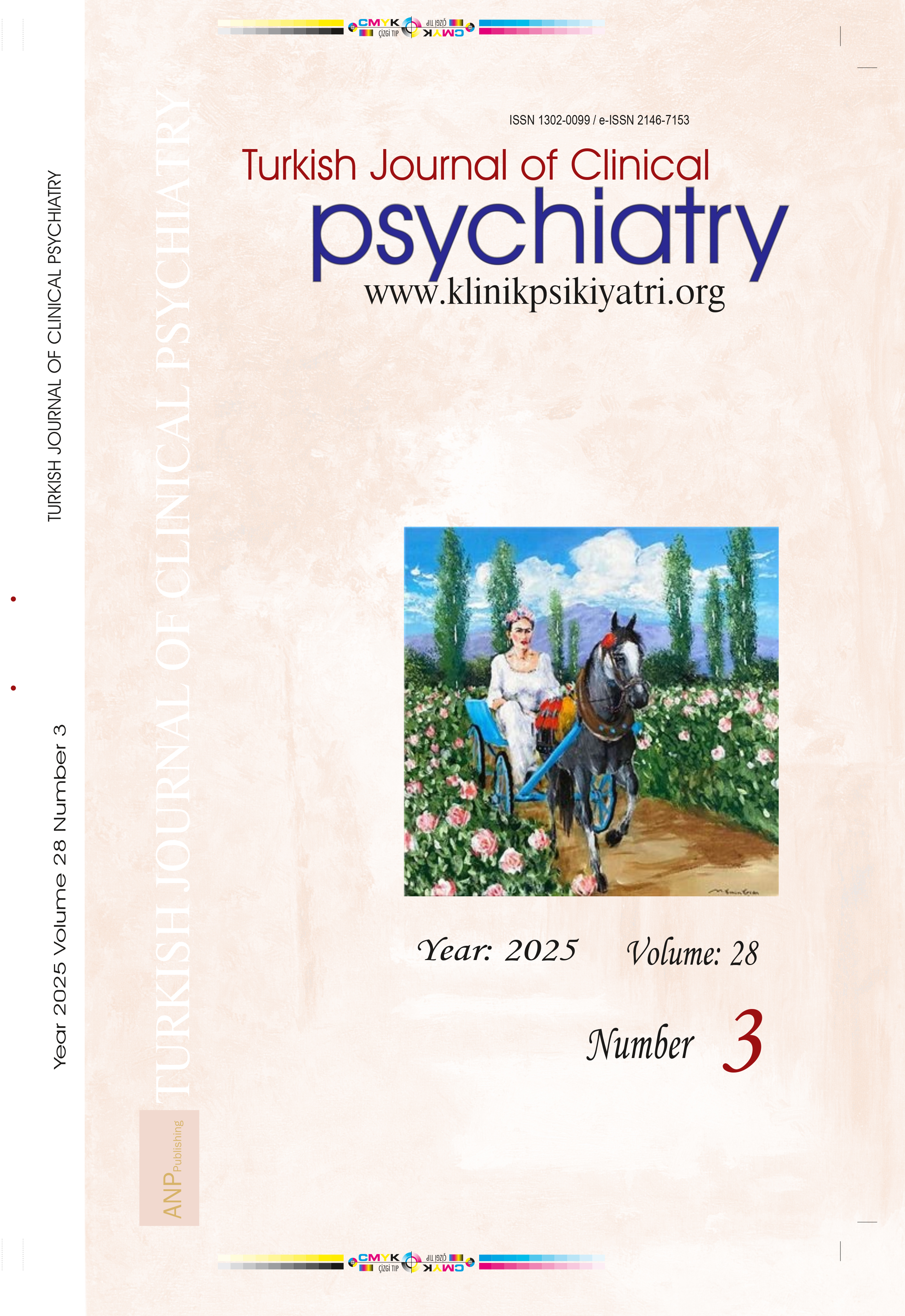





A comparison for thyroid functions and clinical features in deficit and non-deficit schizophrenia
Ali İnaltekin1, Yasin Taşdelen21Kastamonu Unıversity School Of Medicine, Department of Psychiatry2Aydın State Hospital, Department of Psychiatry
INTRODUCTION: The primary occurrence and persistence of negative symptoms observed in patients with schizophrenia is deficit syndrome. Although the association between thyroid hormones and schizophrenia symptoms has been reported, no studies have investigated thyroid function in patients with deficit schizophrenia (DS). This study aims to investigate the clinical features and thyroid function in DS patients by comparing them with patients with non-deficit schizophrenia (NDS) and a control group.
METHODS: 33 subjects from DS, 35 subjects from NDS and 35 healthy control subjects were included in the study. Patients with schizophrenia were classified into DS and NDS using the deficit syndrome table. Thyroid function was assessed by the levels of TSH, free T3 (fT3), and free T4 (fT4). Sociodemographic data and clinical characteristics were evaluated using the Sociodemographic Data Form, the Positive Symptoms Evaluation Scale (SAPS), the Negative Symptoms Evaluation Scale (SANS), and the Calgary Depression in Schizophrenia Scale (CDSS).
RESULTS: There was no significant difference between DS and NDS groups in terms of age, gender, marital status and education (p>0.05). The percentage of unemployed was significantly higher in the DS group than in the NDS group (p=0.005). There were 14 (42.4%) suicide attempts in the DS group and 11 (31.4%) in the NDS group, and there was no significant difference between the groups (p>0.05). There was no significant difference between the groups when comparing the thyroid functions of the DS, NDS and healthy control groups regarding fT4, fT3 and TSH (p>0.05). There was no significant correlation between TSH, free T3, free T4 and total SANS, total SAPS and CDSS scores (p>0.05).
DISCUSSION AND CONCLUSION: According to our study thyroid function is not different in DS, NDS and healthy controls and is not associated with positive, negative and depressive symptoms in patients with schizophrenia.
Eksiklik sendorumu olan ve olmayan şizofrenide tiroid işlevleri ve klinik özelliklerin karşılaştırılması
Ali İnaltekin1, Yasin Taşdelen21Kastamonu Üniversitesi Tıp Fakültesi, Psikiyatri Anabilim Dalı2Aydın Devlet Hastanesi, Psikiyatri Kliniği
GİRİŞ ve AMAÇ: Şizofreni hastalarında gözlemlenen negatif belirtilerin birincil oluşu ve sürekliliği defisit sendromudur. Tiroid hormonları ile şizofreni semptomları arasındaki ilişki bildirilmiş olsa da, eksiklik şizofreni (DS) hastalarında tiroid fonksiyonunu araştıran çalışma yoktur. Bu çalışma, DS'li hastalardaki klinik özellikleri ve tiroid fonksiyonlarını, defisit olmayan şizofreni (NDS) hastaları ve kontrol grubu ile karşılaştırarak araştırmayı amaçlamaktadır.
YÖNTEM ve GEREÇLER: Çalışmaya DS'den 33 kişi, NDS'den 35 kişi ve 35 sağlıklı kontrol dahil edildi. Şizofreni hastaları, eksiklik sendromu çizelgesi kullanılarak DS ve NDS olarak sınıflandırıldı. Tiroid fonksiyonu TSH, serbest T3 (sT3) ve serbest T4 (sT4) seviyeleri ile değerlendirildi. Sosyodemografik veriler ve klinik özellikler Sosyodemografik Veri Formu, Pozitif Belirtileri Değerlendirme Ölçeği (SAPS), Negatif Belirtileri Değerlendirme Ölçeği (SANS), Şizofrenide Calgary Depresyon Ölçeği (CDSS) kullanılarak değerlendirildi.
BULGULAR: : DS ve NDS grupları arasında yaş, cinsiyet, medeni durum ve eğitim açısından anlamlı fark yoktu (p>0,05). İşsizlerin yüzdesi DS grubunda NDS grubuna göre anlamlı derecede yüksekti (p=0,005). DS grubunda 14 (%42,4) ve NDS grubunda 11 (%31,4) kişide intihar girişimi vardı ve gruplar arasında anlamlı fark yoktu (p>0,05). DS, NDS ve sağlıklı kontrol gruplarının tiroid fonksiyonları karşılaştırıldığında sT4, sT3 ve TSH açısından gruplar arasında anlamlı fark yoktu (p>0,05). TSH, sT3, sT4 ile toplam SANS, toplam SAPS ve CDSS puanları arasında anlamlı korelasyon saptanmadı (p>0,05).
TARTIŞMA ve SONUÇ: Çalışmamıza göre tiroid fonksiyonu DS, NDS ve sağlıklı kontrollerde farklı değildir ve şizofreni hastalarında pozitif, negatif ve depresif belirtilerle ilişkili değildir.
Manuscript Language: English
(742 downloaded)










